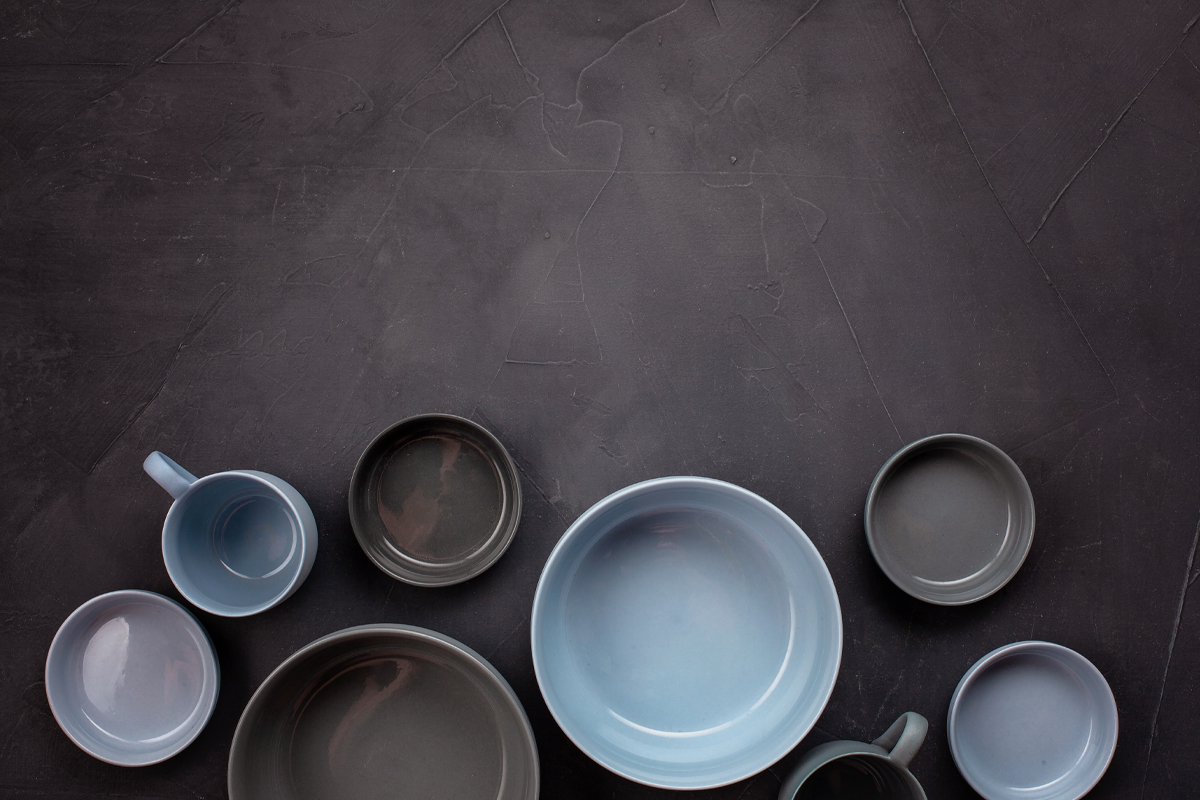Last week, during a dinner with colleagues from the architecture world, someone commented on the tableware: raw ceramic plates and natural linen napkins.
“Minimalist — but with character,” they said.
It wasn’t minimalism. It was coherence.
Because setting a table today is no longer just about aesthetics.
It’s a declaration of values — a silent manifesto that communicates who we are and what we stand for.
And in the age of conscious sustainability, every detail speaks.
Color as emotional language
The color trends of 2025 move away from the maximalism of the past and embrace palettes that speak the language of nature: Mocha Mousse — Pantone’s Color of the Year — earthy tones like Cinnamon Slate, sage greens, and sandy neutrals.
It’s not coincidence — it’s the reflection of a collective desire for grounding, for returning to what is essential.
In his book Unreasonable Hospitality, Will Guidara — the restaurateur who led Eleven Madison Park to become the world’s best restaurant — argues that hospitality has become today’s true competitive differentiator. It’s no longer enough to serve; one must create genuine connections.
And that begins at the table.
Color pairings in 2025 favor subtle contrasts: cappuccino browns with slate grays, aqua greens with bright whites, ruby reds balanced with neutral shades.
This is not decoration for its own sake — it’s the design of a sensory experience.

When art questions food
At Madrid’s Reina Sofía Museum, the exhibition On the Table: Semiotics of Food explored the complex relationship between food, politics, and culture, offering a critical look at the capitalist cycles surrounding food production.
It reversed the perspective: the table is not a stage for display, but a space for reflection and awareness.
Similarly, At the Table at Western Carolina University used the idea of the table to explore themes of community, power, and representation — gathering works of contemporary art that question what it means today to “have a seat at the table.”
The message is clear: to set a conscious table means to understand the chain behind every object, every material, every choice.
The new codes of hospitality
In the hospitality industry, sustainability has shifted from formal certifications to daily practice: using local ingredients, reducing waste, choosing natural materials like linen, organic cotton, and handmade ceramics.
The defining materials for 2025 tables are linen — elegant and naturally temperature-regulating — organic cotton for its durability, and raw ceramics that add tactile depth.
These are not aesthetic fads but concrete answers to the need to reduce environmental impact without compromising beauty.
Maximalism is returning, but in a conscious form: layers of texture, bold patterns, golden finishes coexisting with organic materials.
Luxury has been redefined: no longer excess, but care for detail, pursuit of craftsmanship, and respect for origin.
Hospitality as a political act
Guidara introduced the concept of “dream weavers” in his restaurant — people dedicated to creating extraordinary, personalized moments for guests.
The same concept translates beautifully into the domestic sphere: to set a conscious table means to curate every detail so that guests feel welcomed, heard, and respected.
The 2025 hospitality trends all move in the same direction: personalization of experience, integration of sustainable practices, and the creation of meaningful moments that highlight connection rather than ostentation.
Color pairings: the new grammar
For 2025, experts suggest pairing blues with whites for a clean look or with cherry accents for warmth.
Mocha Mousse lends itself beautifully to layering with soft pinks or yellows — as seen in Chanel and Fendi’s Spring 2025 collections.
But the real innovation is color dipping — immersing an entire setting in one tone to create visual and emotional continuity. Particularly striking with terracotta hues that recall Tuscan hills or sun-drenched Mexican clay homes.
The intelligent pairing of materials enhances color perception: ceramics and stoneware harmonize perfectly with warm tones like Leather Saddle Brown, while porcelain and bone china elevate lighter shades such as Glacier White.
From concept to action
Setting a sustainable table doesn’t require revolution — just coherent, mindful choices:
- Choose local craftsmanship over standardized industrial production. Each handmade object tells a story, carrying the time and care of its maker.
- Select natural, durable materials that age gracefully rather than becoming obsolete — linen that softens with every wash, ceramics that develop a unique patina over time.
- Embrace organic imperfection instead of serial perfection. Small irregularities are the mark of the human hand — the opposite of industrial anonymity.
- Build color palettes that dialogue with natural light and the changing seasons, rather than chasing fleeting trends.
The table as manifesto
As the Reina Sofía exhibition reminds us, food and the table have the power to build human bonds, evoke memories, and generate stories.
A conscious table amplifies this role: it becomes the place where values take form, where aesthetics meet ethics, where beauty and goodness coexist.
Guidara’s “unreasonable hospitality” is based on a single principle: attention.
You don’t need to spend large sums to impress someone — you simply need to be present, to listen, to respond with intention.
This applies to every aspect of the table: from linen to centerpieces, from lighting to seating.
Every detail should answer one question:
“What will make the people sitting here feel truly welcome?”
The luxury of time
In 2025, attention shifts from towering centerpieces to low, linear compositions: a single branch in a narrow vase, sculptural elements arranged along a shallow tray.
It’s the luxury of intentional simplicity — which takes more time and care than casual complexity.
Setting a conscious table means taking time to think, to select, to compose.
It’s not efficiency — it’s contemplation.
Not speed — but intention.
The next time you set your table, pause.
Look at what you’ve chosen.
Ask yourself: Do these materials honor those who made them? Do these colors reflect my values? Does this arrangement create space for real conversation?
Because a conscious table isn’t the one that impresses — it’s the one that welcomes.
Not the one that flaunts — but the one that connects.
And in an age of acceleration, compulsive consumption, and virtual relationships, a thoughtfully set table becomes a radical act — a small yet powerful gesture of resistance.






